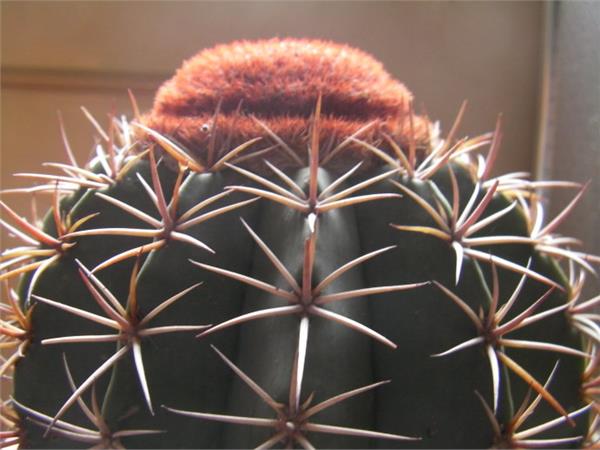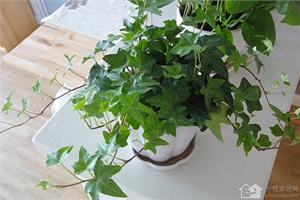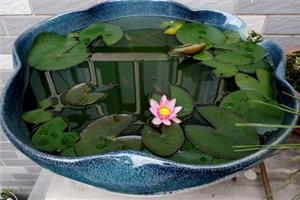Matters needing attention for culture stratum clouds key points for propagation of stratum clouds
Speaking of stratospheric clouds, friends who do not know will think that it is the weather. What we need to know today is a kind of cactus plant. Its appearance is very lovely, some like lazy sheep, a kind of cute. Next, we will learn about the farming methods of the lower clouds and the matters needing attention in maintenance. Let's get to know it.
Stratum cloud culture methods (basic knowledge):
The best time to reproduce: stratospheric clouds can reproduce all the year round
The best growing soil: the culture soil can be mixed with rotten leaf soil, garden soil, coarse sand, cow dung block, husk charcoal and so on.
The optimum growth temperature: the suitable temperature for layer cloud growth is 15-25 °C, which can withstand a short low temperature of 5 degrees Celsius.
The best growth light: stratospheric clouds like sunlight and should be properly sheltered in midsummer, but excessive shading will lead to their non-flowering; in the growing season, adequate light and good ventilation are needed.
Culture methods of stratospheric clouds
Precautions for stratospheric clouds in culture:
To apply fertilizer:
Potted layer cloud growing season can also be appropriate fertilization, especially with three-rowed arrow grafting, more attention should be paid to fertilization. Fertilizer can be used with fully mature dilute liquid fertilizer, once every 10 rain for 15 days. After entering the autumn, pay attention to the control of fertilizer and water, generally apply once a month, and stop fertilizing in early October. If you do not control the fertilizer, let the layer clouds continue to grow, the tender sphere is vulnerable to freezing damage when overwintering.
Be careful not to touch the ball when fertilizing, and spray it with water immediately if there is any.
The base fertilizer should be mixed with appropriate amount in the culture soil before going into the basin or changing the basin, such as fully mature oil meal, bone meal, chicken pigeon dung, etc., and pile it for a period of time to be fully integrated with the soil. Topdressing should be based on plant growth, but in the spring and autumn season, fully mature feather hoof horn or oil meal fertilizer and water should be applied every two weeks. It can also be applied alternately with 0.1% urea and 0.2% potassium dihydrogen phosphate mixed solution, and the amount of fertilizer and water is applied to cover the basin soil surface. Household farming, such as basin soil, has a high content of organic matter, which can be used alone to keep the environment clean. No fertilizer during high temperature, extreme heat and low temperature dormancy.
Watering essentials:
The time of watering is early morning in summer, sunny weather in winter, morning and evening in spring and autumn. In general, do not sprinkle water from the top, or there will be ugly spots on the sphere over a long period of time. In general, watering must be fully watered, so the soil must be often loosened to make the basin soil easily and evenly absorb enough water.

Layer cloud detail map
Summer is the growing period of stratospheric clouds, with high temperature and high water demand. Must be fully watered, should be carried out in the morning and evening when the temperature is low, hot at noon, watering is easy to cause ball burns. In the hot and rainy season, watering should also be controlled properly. For those cactus with sunken tops, be careful not to pour water into the depressions so as not to cause decay, especially in the evening.
Winter dormancy should be controlled watering, in order to keep the basin soil not too dry, the lower the temperature, the more to keep the basin soil dry. Adult big balls are more resistant to drought than seedlings. Watering in winter should be carried out on a sunny morning. With the increase of air temperature, the plant will gradually break away from dormancy, and the watering times and amount of water will gradually increase. Be fully watered except in winter.
Replacement of basin soil:
Potted layer cloud, it is appropriate to use strong breathable tile basin, basin bottom cushion broken brick particles as drainage layer. The palm root plexus is small, the planting basin should not be too large, and the basin diameter should be similar to the plant diameter, beautiful and harmonious. When changing the basin, cut off some of the old roots. Dry for 5 days and then plant in the pot, the planting should not be too deep, it is appropriate to keep the root neck of the sphere flat with the soil surface. In order to avoid rotting roots, do not water the newly planted layer clouds, just spray 2Mel three times a day, water a small amount after half a month, and gradually increase watering after a month when the new roots grow.
Main points of reproduction:
Stratum cloud reproduction can be used to sow seeds. All species of the genus rosette are fertilized with white flowers. Stratospheric clouds can be collected several times a year, and the seed emergence rate is quite high. Grow fast when the temperature is right, if grafted on the measuring ruler, the flower pedestal can appear in just a few years. The steps are as follows:
1. Soil basin: load the mixed soil into the flowerpot until the pot mouth is flat, and then tap the basin with your hands. The soil will naturally sink to the basin mouth 1cm. This depth is suitable for film mulching and later watering. There is no need to consider the "coarse particles at the bottom of the basin and fine particles in the topsoil" mentioned in the past.
2, soak the pot: put the flowerpot in the water, the water depth is half of the flowerpot, half a minute the soil is basically full of water, take out the flowerpot for use. The soil does not need to be sterilized at high temperature with potassium permanganate solution and microwave oven.
3. Sowing:
1) soak the seeds immediately after soaking, and sow the seeds evenly in the topsoil. Use thumb and index finger to gently sow seeds, you can first try the feel on white paper.
2) you can also carry out on-demand, use a toothpick, dip a little water on the tip, then dip the seeds, and easily sow them on the seedbed.
3) it is best to sow seeds in a separate flowerpot for each variety. I sowed 50-100 seeds in a 10 × 10cm square pot.
4) the cactus seeds (including most succulent plant seeds) are strictly forbidden to cover the soil after sowing, and there is basically no emergence after the seeds are covered with soil.
5) there is no need to soak the seeds in advance, it is too tedious, and it may not necessarily improve the emergence rate. What I introduce here is the easiest method, and I have no objection if we must soak the seeds.
4. Insert the pvc tag after sowing and write the seed name (including Latin name), quantity, time and other information on the label with a pencil. Labels are very useful, and when you collect more and more varieties, you can deeply realize that a good brain is not as good as a clear label.
5. Disinfection: spray carbendazim solution (diluted according to the proportion of instructions) after sowing, so that the topsoil and flowerpot can be sprayed evenly. It is necessary for novice disinfection work. In the process of sowing in the greenhouse, due to the large amount of sowing, it is simple and simple, and the step of disinfection has been omitted.
7. Shading: adopt the standard operation of "three, two, lighting". If you sow the environment where you see the sun for 1-2 hours in the morning and evening, there is no need for shade, the north windowsill is very suitable.
8, emergence time: wait for the seeds to emerge after sowing, there is no need to open the film for ventilation, ordinary opening of the film will lead to bacterial invasion, due to different varieties, the emergence time is also very different, fast 2-3 days emergence, slow 10-15 days before emergence.
Pest control:
In the environment of high temperature and poor ventilation, diseases and insect pests are easy to occur. Diseases can be sprayed with carbendazim or topiramate, and pests can be killed by spraying dimethoate. No matter what kind of liquid is sprayed, it should be carried out outdoors.
The above is the relevant introduction of this article, I believe you have a simple understanding of this after reading it, if necessary, you can continue to pay attention to the No. 1 home network for more information.
7. Shading: adopt the standard operation of "three, two, lighting". If you sow the environment where you see the sun for 1-2 hours in the morning and evening, there is no need for shade, the north windowsill is very suitable.
8, emergence time: wait for the seeds to emerge after sowing, there is no need to open the film for ventilation, ordinary opening of the film will lead to bacterial invasion, due to different varieties, the emergence time is also very different, fast 2-3 days emergence, slow 10-15 days before emergence.
Pest control:
In the environment of high temperature and poor ventilation, diseases and insect pests are easy to occur. Diseases can be sprayed with carbendazim or topiramate, and pests can be killed by spraying dimethoate. No matter what kind of liquid is sprayed, it should be carried out outdoors.
The above is the relevant introduction of this article, I believe you have a simple understanding of this after reading it, if necessary, you can continue to pay attention to the No. 1 home network for more information.
Related
- Wuhan Hospital Iron Tree Blooming Result Was Instantly Frightened by the Gardener Master
- Which variety of camellia is the most fragrant and best? Which one do you like best?
- What is the small blue coat, the breeding methods and matters needing attention of the succulent plant
- Dormancy time and maintenance management of succulent plants during dormancy
- Minas succulent how to raise, Minas succulent plant pictures
- What are the varieties of winter succulent plants
- How to raise succulent plants in twelve rolls? let's take a look at some experience of breeding twelve rolls.
- Attention should be paid to water control for succulent plants during dormant period (winter and summer)
- Watering experience of twelve rolls of succulent plants
- Techniques for fertilizing succulent plants. An article will let you know how to fertilize succulent plants.



